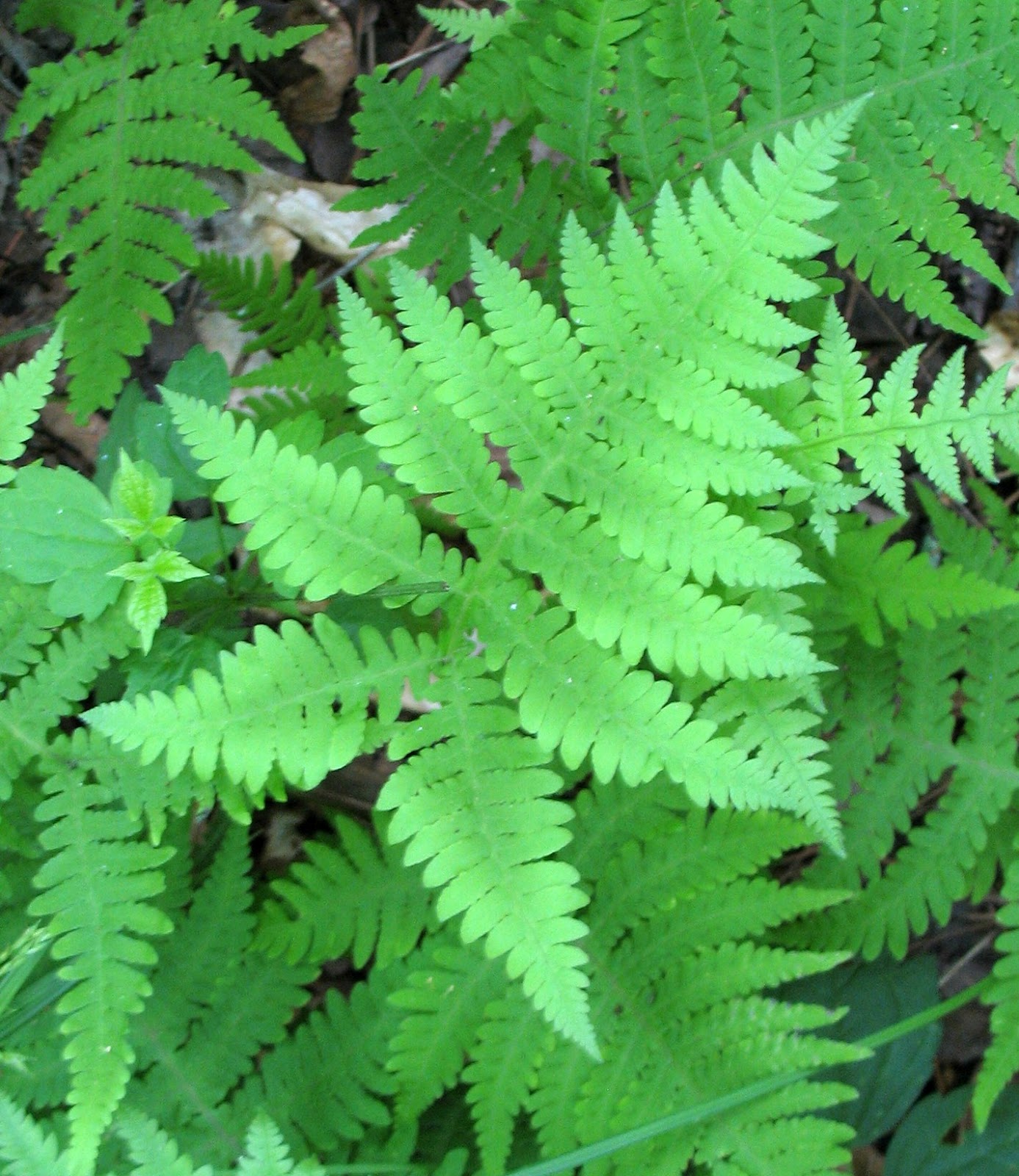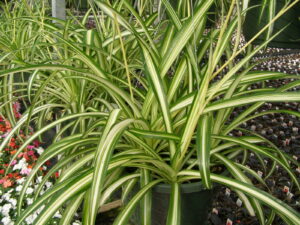When we think of lush green landscapes, vibrant gardens, and breathtaking natural beauty, fern plants often come to mind. These ancient plants have captivated human beings for centuries with their delicate fronds, graceful forms, and fascinating life cycles. From their historical significance to their diversity and unique adaptations, ferns are truly nature’s living masterpieces. In this article, we will delve into the captivating world of fern plants, exploring their characteristics, uses, and the reasons why they continue to enchant and inspire us.
1. A Glimpse into the World of Ferns
Before we delve into the intricacies of fern plants, let’s take a step back and understand what they truly are. Ferns are a group of vascular plants that belong to the division Pteridophyta. They have been around for over 360 million years, predating dinosaurs and even flowering plants. With over 12,000 known species, ferns are distributed worldwide, thriving in a variety of habitats, from tropical rainforests to arid deserts.
2. The Anatomy of Fern Plants
To understand the unique characteristics of fern plants, it is important to explore their anatomy. Ferns consist of several distinct parts, each serving a specific purpose in their life cycle and survival.
Fronds: The most recognizable feature of ferns is their fronds, which are the leaf-like structures. Fronds can vary greatly in size, shape, and complexity, ranging from small and simple in some species to large and intricately divided in others.
Rhizomes: Ferns have rhizomes, which are horizontal underground stems that serve as a storage organ for nutrients and water. Rhizomes also produce roots and new fronds, enabling ferns to spread and reproduce.
Sori: Sori are specialized structures found on the undersides of fern fronds. They contain clusters of sporangia, which are responsible for producing and dispersing spores. Spores are crucial for fern reproduction and are dispersed by wind or water.
Prothalli: The prothallus is a tiny, heart-shaped structure that develops from a spore. It is the gametophyte stage of ferns and produces male and female gametes, which fertilize to form a new fern plant.
3. The Diversity of Ferns
Ferns exhibit an incredible diversity, with a wide range of sizes, shapes, and growth habits. Let’s explore some of the most notable types of ferns:
3.1 Tree Ferns
Tree ferns are imposing plants that resemble palm trees. They can reach impressive heights and are found in tropical and subtropical regions. Tree ferns have a single trunk, often covered in fibrous roots, and a crown of large, spreading fronds.
3.2 Maidenhair Ferns
Maidenhair ferns are known for their delicate and lacy fronds. They are popular ornamental plants and are often grown indoors. Maidenhair ferns thrive in moist, shady environments and add an elegant touch to any space.
3.3 Bracken Ferns
Bracken ferns are among the most common ferns and are found in various habitats worldwide. They have large, triangular fronds and spread aggressively through underground rhizomes. Despite being considered invasive in some areas, bracken ferns have cultural, medicinal, and culinary uses.
3.4 Staghorn Ferns
Staghorn ferns are epiphytic ferns that attach themselves to trees or rocks. They have unique antler-like fronds, which give them their distinctive name. Staghorn ferns are popular as decorative plants and can be grown in hanging baskets or mounted on plaques.
4. The Life Cycle of Ferns
Ferns have a fascinating life cycle that involves alternation of generations, where they alternate between two distinct stages: the sporophyte and the gametophyte.
4.1 Sporophyte Stage
The sporophyte stage is the dominant stage in the life cycle of ferns. It begins with a spore, which develops into a mature fern plant. The sporophyte stage is characterized by the fronds, rhizomes, and sori. Sporangia within the sori produce spores through meiosis.
4.2 Gametophyte Stage
The gametophyte stage is the gamete-producing stage of ferns. It starts with a spore germinating into a prothallus, which is a small, heart-shaped structure. The prothallus produces both male and female gametes, which fuse to form a new sporophyte fern plant.
5. The Significance of Ferns in History and Culture
Ferns hold deep historical and cultural significance in many societies around the world. Let’s explore some of the ways ferns have influenced human culture:
5.1 Fossil Ferns
Fern fossils have provided scientists with invaluable insights into Earth’s ancient ecosystems. These fossils have helped reconstruct prehistoric environments and shed light on the evolution of plants and the planet itself.
5.2 Symbolism and Mythology
In various cultures, ferns have been associated with symbolism and mythology. In Celtic folklore, ferns were believed to possess magical properties and were thought to bring good luck and protection. In Japan, ferns represent humility and sincerity.
5.3 Medicinal and Culinary Uses
Throughout history, ferns have been used for their medicinal and culinary properties. Traditional healers in different cultures have employed ferns for treating ailments such as coughs, skin conditions, and digestive disorders. Some ferns, such as the fiddleheads of certain species, are also edible and considered a delicacy in certain cuisines.
6. Ferns in Gardens and Landscaping
Ferns have long been favored by gardeners and landscapers for their aesthetic appeal and versatility. Whether used as standalone specimens, ground covers, or accents in rock gardens, ferns bring a touch of elegance and tranquility to outdoor spaces. Their ability to thrive in shade makes them ideal for creating lush and enchanting shaded gardens.
6.1 Fern Varieties for Gardens
When selecting ferns for your garden, consider factors such as the available space, light conditions, and moisture levels. Some popular fern varieties for gardens include:
- Maidenhair fern (Adiantum spp.)
- Japanese painted fern (Athyrium niponicum)
- Ostrich fern (Matteuccia struthiopteris)
- Holly fern (Cyrtomium falcatum)
- Autumn fern (Dryopteris erythrosora)
6.2 Ferns in Landscape Design
Ferns can be used strategically in landscape design to create stunning visual effects. Here are a few ways to incorporate ferns into your landscape:
- Create a lush fern border along walkways or garden edges.
- Plant ferns in rock gardens or alongside water features for a natural look.
- Combine ferns with other shade-loving plants to create a harmonious and balanced garden.
- Use ferns as focal points in garden beds or containers.
7. Fern Conservation and Threats
While ferns have survived for millions of years, they are not immune to the threats posed by habitat loss, climate change, and invasive species. Many fern species are currently facing the risk of extinction.
Conservation efforts play a crucial role in protecting ferns and their habitats. It is essential to raise awareness about the importance of preserving these ancient plants and their ecological significance. Additionally, strict regulations and measures are necessary to combat the illegal trade of rare and endangered fern species.
8. Frequently Asked Questions (FAQs)
8.1 Can ferns be grown indoors?
Yes, many fern species can be grown successfully indoors. They thrive in areas with indirect light, high humidity, and consistent moisture levels. Maidenhair ferns, Boston ferns, and bird’s nest ferns are popular choices for indoor cultivation.
8.2 How do I care for fern plants?
Caring for fern plants involves providing them with the right growing conditions. They generally prefer shade or partial shade, moist soil, and high humidity. Regular watering, avoiding direct sunlight, and providing adequate air circulation are key to maintaining healthy ferns.
8.3 Can ferns be propagated?
Yes, ferns can be propagated through various methods, including spores, division, and tissue culture. Spore propagation requires patience and specialized techniques, while division involves separating a mature fern plant into smaller sections. Tissue culture is a more advanced method that involvesthe growth of ferns from small pieces of tissue in a laboratory setting.
8.4 Are ferns poisonous?
While not all ferns are poisonous, some species can be toxic to humans and animals if ingested. It is important to research the specific fern species you have to determine its toxicity. If you have pets or small children, it is advisable to keep toxic ferns out of reach or avoid having them in your home altogether.
8.5 Can ferns survive in dry environments?
Although ferns are known for their preference for moist environments, some species have adaptations that allow them to survive in drier conditions. These ferns often have special mechanisms to conserve water, such as small, thick leaves or the ability to go dormant during dry periods. However, it is important to note that most ferns thrive in humid environments and may struggle to survive in extremely dry conditions.
9. Conclusion
Fern plants have captivated humans for centuries with their beauty, diversity, and resilience. From their ancient origins to their unique life cycles, ferns continue to inspire awe and fascination. Whether used in gardens, studied by scientists, or woven into the fabric of cultural traditions, ferns hold a special place in the natural world. As we appreciate and conserve these living masterpieces, let us remember the importance of preserving their habitats and ensuring their survival for generations to come.
10. Summary
Fern plants are ancient vascular plants that have been around for millions of years. They exhibit a wide range of sizes, shapes, and growth habits, from towering tree ferns to delicate maidenhair ferns. Ferns have a unique life cycle that involves alternation of generations, with the sporophyte stage being the dominant stage. Throughout history, ferns have held cultural and medicinal significance and continue to be valued in gardens and landscaping for their aesthetic appeal. However, ferns also face threats from habitat loss and climate change, making conservation efforts crucial. By understanding and appreciating the fascinating world of ferns, we can ensure their preservation and continue to be inspired by their beauty and resilience.
11. Frequently Asked Questions (FAQs)
11.1 Can ferns be grown indoors?
Yes, many fern species can be grown successfully indoors. They thrive in areas with indirect light, high humidity, and consistent moisture levels. Maidenhair ferns, Boston ferns, and bird’s nest ferns are popular choices for indoor cultivation.
11.2 How do I care for fern plants?
Caring for fern plants involves providing them with the right growing conditions. They generally prefer shade or partial shade, moist soil, and high humidity. Regular watering, avoiding direct sunlight, and providing adequate air circulation are key to maintaining healthy ferns.
11.3 Can ferns be propagated?
Yes, ferns can be propagated through various methods, including spores, division, and tissue culture. Spore propagation requires patience and specialized techniques, while division involves separating a mature fern plant into smaller sections. Tissue culture is a more advanced method that involves the growth of ferns from small pieces of tissue in a laboratory setting.
11.4 Are ferns poisonous?
While not all ferns are poisonous, some species can be toxic to humans and animals if ingested. It is important to research the specific fern species you have to determine its toxicity. If you have pets or small children, it is advisable to keep toxic ferns out of reach or avoid having them in your home altogether.
11.5 Can ferns survive in dry environments?
Although ferns are known for their preference for moist environments, some species have adaptations that allow them to survive in drier conditions. These ferns often have special mechanisms to conserve water, such as small, thick leaves or the ability to go dormant during dry periods. However, it is important to note that most ferns thrive in humid environments and may struggle to survive in extremely dry conditions.



